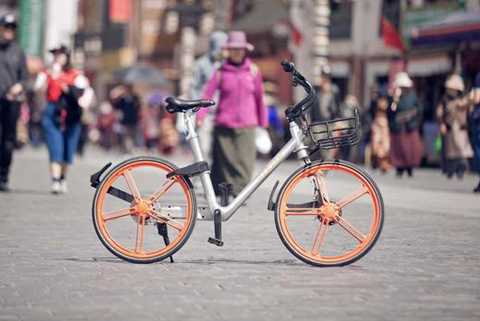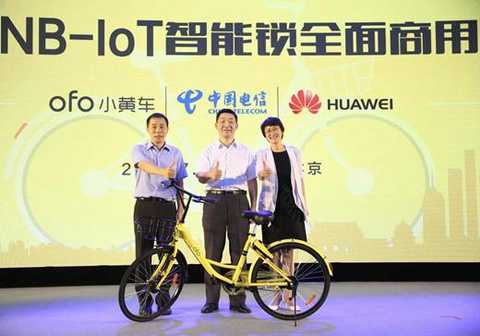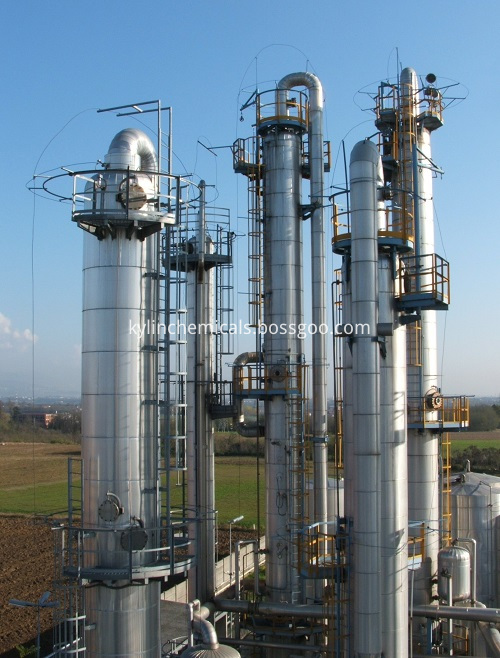Mobai and ofo have already cooperated with China Telecom, China Mobile and Huawei to achieve more efficient connection technology. Recently, there are more and more yellow and orange bicycles on the street. In terms of the number of users, Moby and ofo are indistinguishable. Nowadays, the sharing of bicycles has entered the second half. With the enthusiasm of the Internet of Things, Moby and ofo have announced their own IoT strategy, and it can be seen that Moby and ofo have already cooperated with China Telecom and China Mobile. Huawei and other companies have cooperated to achieve more efficient connection technology. Many people think that the competition mode between Mobai and ofo is very similar to that of the year. But according to the all-media reporters in the communication world, the development strategy of the Internet of Things and ofo is very different, even more with Didi and The competition between the fast is essentially different. Whether to commercial NB-IoT smart locks as soon as possible In terms of the development strategy of the Internet of Things, Moby and ofo have different views. For example, in terms of smart locks, both ofo and Moby currently use 2G+ Bluetooth communication, and Moby has shortened the unlocking time to less than 3s. With the enhancement of NB-IoT network coverage and the advantages of low power consumption, low cost, wide coverage and large connectivity of NB-IoT technology, bicycle companies believe that NB-IoT can be used in the smart bicycle industry. In terms of low power consumption, NB-IoT has higher receiving sensitivity. Under the same signal strength coverage, NB-IoT can pass through two walls. In terms of low cost, NB-IoT modules are in the range of 10 to 100 million. At the mass production level, the price can be reduced to 1 US dollar per unit, which can achieve a large number of popularization; in terms of wide coverage, the coverage radius of NB-IoT is about 4 times that of GSM/LTE, and the coverage radius of eMTC is about 3 times that of GSM/LTE; In terms of large connections, NB-IoT supports tens of thousands of connections per sector in a shared bicycle, which greatly increases the number of connections that the bicycle can access to the base station at the same time. It can provide full access for some scenes where bicycles are densely distributed, while 2G base stations can only support More than 200 connections. Huawei experts said that shared bicycles are typical low-power wide-area Internet of Things applications, and NB-IoT is an Internet of Things technology designed for such scenarios. From chip to network, Huawei's end-to-end NB-IoT solution has been proven in more than 20 industry applications. The cooperation of shared bicycles is another application breakthrough of NB-IoT technology. Therefore, bicycle manufacturers are considering introducing NB-IoT as a smart lock option. But Moby and ofo's development plans are different. Ofo originally created mechanical locks, but with the development of technology, ofo is also introducing more smart locks. Moreover, ofo recently announced the cooperation with China Telecom and Huawei to release the NB-IoT smart lock, and continue to promote the popularity of NB-IoT standard locks nationwide. The ofo Internet of Things experts said that ofo will remove the 2G module of the smart lock in the future, leaving only the NB-IoT module. This is feasible from a long-term perspective, as NB-IoT can meet the development of bicycle technology as the coverage of the NB-IoT network increases and the technology continues to improve. Therefore, the promotion of NB-IoT standard locks is of great significance for improving the unlocking time, user experience and maintenance cost of smart locks. However, when the network deployment is not perfect, the full deployment of the NB-IoT smart lock is easy to encounter the problem of no NB-IoT signal coverage in some areas of the city. In these areas, the bicycle is like falling into the "black hole", and the GPS signal cannot be Outside the transfer, this bicycle will face a situation of loss and management difficulties, and will also bring the problem of bicycle "cemetery". Mobha has not yet promoted the lock of the NB-IoT system. Whether it will be promoted or not will wait until the NB-IoT network coverage is perfect. On May 23, Mobike announced that it has entered into cooperation with Qualcomm and China Mobile Research Institute to jointly launch China's first LTE CatM1/NB1 and EGPRS (eMTC/NB-IoT/GSM) multimode field test. It can be seen that the smart locks launched by Mobai are coexisting with eMTC/NB-IoT and GSM in the future. In the case of poor coverage of NB-IoT network, bicycles can be switched to GSM network. After years of accumulation, GSM network Coverage has been relatively complete, which will effectively solve the problems brought about by the “black hole†of the Internet in the Internet of Things era. The electronic fence is different from the SMPL implementation. Bicycles not only need to be easy to ride, but also have to be parked in a civilized manner. It is a problem that bicycle companies should solve if they can successfully guide users to park their bicycles in a reasonable area. In this regard, ofo launched its own “Electronic Fence†program, which was successfully tested and put into operation in Tongzhou, Beijing. It is understood that there are currently 296 electronic fences in Tongzhou District, most of which are concentrated in residential areas, subways, schools, bus stations, subway stations and important business districts. The location information of the "electronic fence" has been uploaded to the system through satellite mapping. At present, theo small yellow car has invested in 2000 eligible vehicles in Tongzhou for pilot projects, and has achieved information access. Unlike the way ofof, Mobai launched SmartMobikePreferredLocation (SMPL). The Mobai smart parking recommendation point is mainly composed of the area marked by the intelligent parking pile and the ground fence line. The Mobai smart lock supports the Beidou/GPS/GLONASS three-mode satellite positioning, combined with the DGPS differential positioning technology, and the accuracy reaches the sub-meter level. The parking solution not only uses GPS positioning to detect the parking position of the user, but also uses the communication between the bicycle and the ground intelligent parking pile to jointly detect whether the bicycle is parked in the fence line. The parking pile detects the position more than the GPS. Precision. Such an approach can effectively improve the problem that GPS positioning is greatly affected by the environment, and the positioning of severe conditions will be seriously offset. In addition, Mobye will also introduce a credit information system, and use coupons and other incentives to encourage users to develop a good habit of civilized parking, thus solving the problem of urban parking. Cooperation with the Internet of Things industry chain is in full swing In order to achieve accurate positioning and intelligent scheduling and management of vehicles, ofo and Moby cooperated with the industry chain in the Internet of Things. In terms of connection management platform, on July 13, China Telecom, Huawei and ofo jointly developed the NB-IoT "Internet of Things Smart Lock", which is fully commercialized, which is closely related to the coverage and platform construction of the NB-IoT network. Huawei experts said that Huawei and China Telecom have jointly built the most extensive NB-IoT commercial network, and have conducted in-depth cooperation in the areas of chips, IoT platforms, cloud computing big data and application ecology. Ofo is the use of China Telecom's connection management platform. Sharing bicycle wrestling into the second half of the Internet of Things technology determines success or failure Before the commercial lock of ofo, Mobaye has already started cooperation with the IoT industry chain. In December 2016, Moby joined forces with Shanghai Mobile and Ericsson to launch the world's first 4G (eMTC) smart lock. In May 2017, Moby cooperated with Huawei and Sichuan Mobile to establish the world's first NB-IoT shared bicycle business. After that, Moby cooperated with Qualcomm and China Mobile Research Institute to realize the world's first 2G/3G/eMTC/NB-IoT multi-mode "full Netcom" smart lock. In addition, Mobye's "Magic Cube" is the only artificial intelligence big data platform in the industry. It provides real-time data provided by Mobility Smart Lock, accurately controls the position and status of each bicycle, predicts supply and demand balance, riding trends and intelligent parking management. Provide scientific reference for urban management and transportation planning departments. The battle for platform entry is getting worse The entrance competition for open platforms has become the focus of cycling companies. Previously, Mohua bicycle investor Ma Huateng and ofo's investor Zhu Xiaohu publicly opened a "slap in the face" in the circle of friends, setting off a discussion about who has more prospects in the future. Ofo and Moby have been fiercely competing in the platform entry. Currently, ofo has over 100 million registered users. According to the latest data from iResearch in May, the monthly active users of ofo grew to 62.72 million, and theo has appeared in Drip, Baidu Map, Alipay and other apps. Among them, in the Alipay APP, users with sesame credit scores above 650 can rent a car without a deposit. At present, Mobai has over 100 million registered users and more than 25 million people ride every day. In March of this year, Mobai fully accessed WeChat, users can directly ride the Mobike bicycle through WeChat wallet. On May 19th, Mobike officially announced the “Mobai+†open platform strategy, and comprehensively laid out three open platforms: “Life Circleâ€, “Big Data†and “Internet of Thingsâ€. The first batch of 8 industry leading brands including China Unicom, China Merchants Bank, China UnionPay, Baidu Map, Yuet Circle, Shenzhou Special Car, China Lodging and R&F Properties, covering communications, finance, travel and health , hotels and real estate and many other areas. The difference between "Internet of Things" and "mobile Internet" Xue Yuyu, senior director of ofo, said that in the future development direction, ofo defines itself as an Internet company, ando launched the “Urban Big Sharing Planâ€, which plans to connect bicycle brands and manufacturers into their own sharing platform and access more products. Line to meet the diverse needs of users to provide urban travel services. Mobin, vice president of Mobai, said that Mobai is more like an Internet of Things company, and that the “human-to-human†connection is gradually developing in the direction of “human-material†connection, which is a revolutionary difference from the previous method of ditting. Drip taxis are also the connection between the user and the driver. The car can't leave people's driving, and the Mobike bicycle adopts the intelligent unlocking method. The user only needs to establish his own connection with the bicycle, so that he can easily ride, and the e-commerce company There are similarities in using drone delivery. From the Internet of Things development strategy of Mobai and ofo, it can be seen that the sharing of bicycles in the Internet of Things era is fundamentally different from the development strategy of the mobile Internet era. Didi has realized the "human-to-human" connection, while sharing bicycles strives to achieve " The connection between people and things is the development trend of the Internet of Things era. Editor in charge: Liu Tingting 8
Kylin Chemicals have been engaged in the research & manufacturing a selected range of Chemical Intermediates & specialties for over one decades,such as hydroxylamine sulfate.
We have the expertise in manufacturing high quality Aromatic Hydrocarbons specialties, serving our customers worldwide in the field of pharmaceuticals, agrochemicals, organic synthesis and coatings, etc. Our main aromatic hydrocarbon product include 2,3-Dihydroindene, Decahydronathalene, Tetrahydronaphthalene, Carbazole, Acenaphthene and Phenanthrene,1 2 3 4-tetrahydronaphthalene, etc.
Our manufacturing base have the advanced DCS operated hydrogenation & rectification facilities, effective quality-control systems, and a very professional technical team, assuring the quality, stability and sustainability to meet/exceed our customers` needs.
Aromatic Hydrocarbons & Specialties Aromatic Hydrocarbons, Intermediates & Specialties,Advanced Intermediates,Chemical Intermediates,Chemical Specialities Kylin Chemicals Co., Ltd. , http://www.kylin-chemicals.com


Sharing bicycle wrestling into the second half of the Internet of Things technology determines success or failure
